Opposite Vérmező, on today's 5-6-7 Magyar Jakobinusok Square, there is a six-storey building. Its height is similar to that of the buildings in its vicinity, so it no longer stands out from the others, but this has not been the case for 85 years, when one of Buda's famous buildings, the House of Creation, stood in its place.
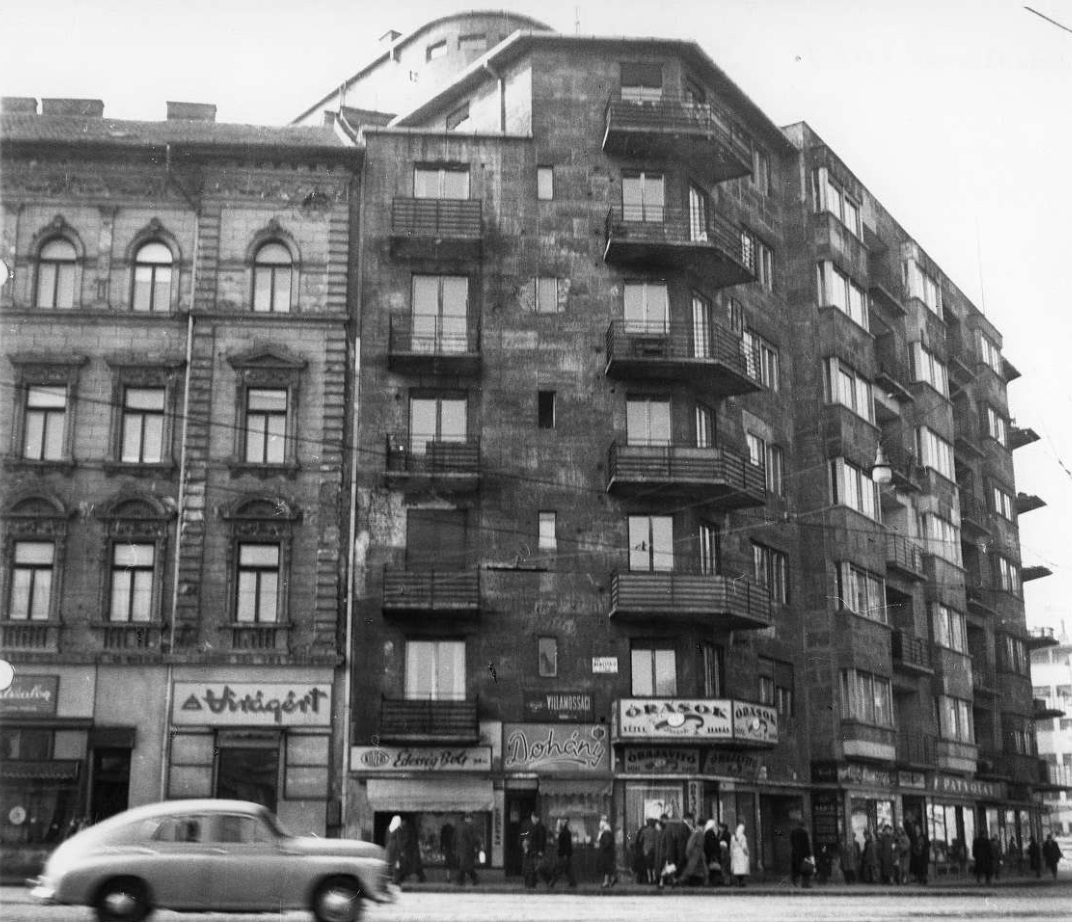 Alkotás Street and the six-storey building on the site of the former House of Creation in the 1940s (Source: Budapest Archives/No.: HU_BFL_XV_19_c_11_2138)
Alkotás Street and the six-storey building on the site of the former House of Creation in the 1940s (Source: Budapest Archives/No.: HU_BFL_XV_19_c_11_2138)
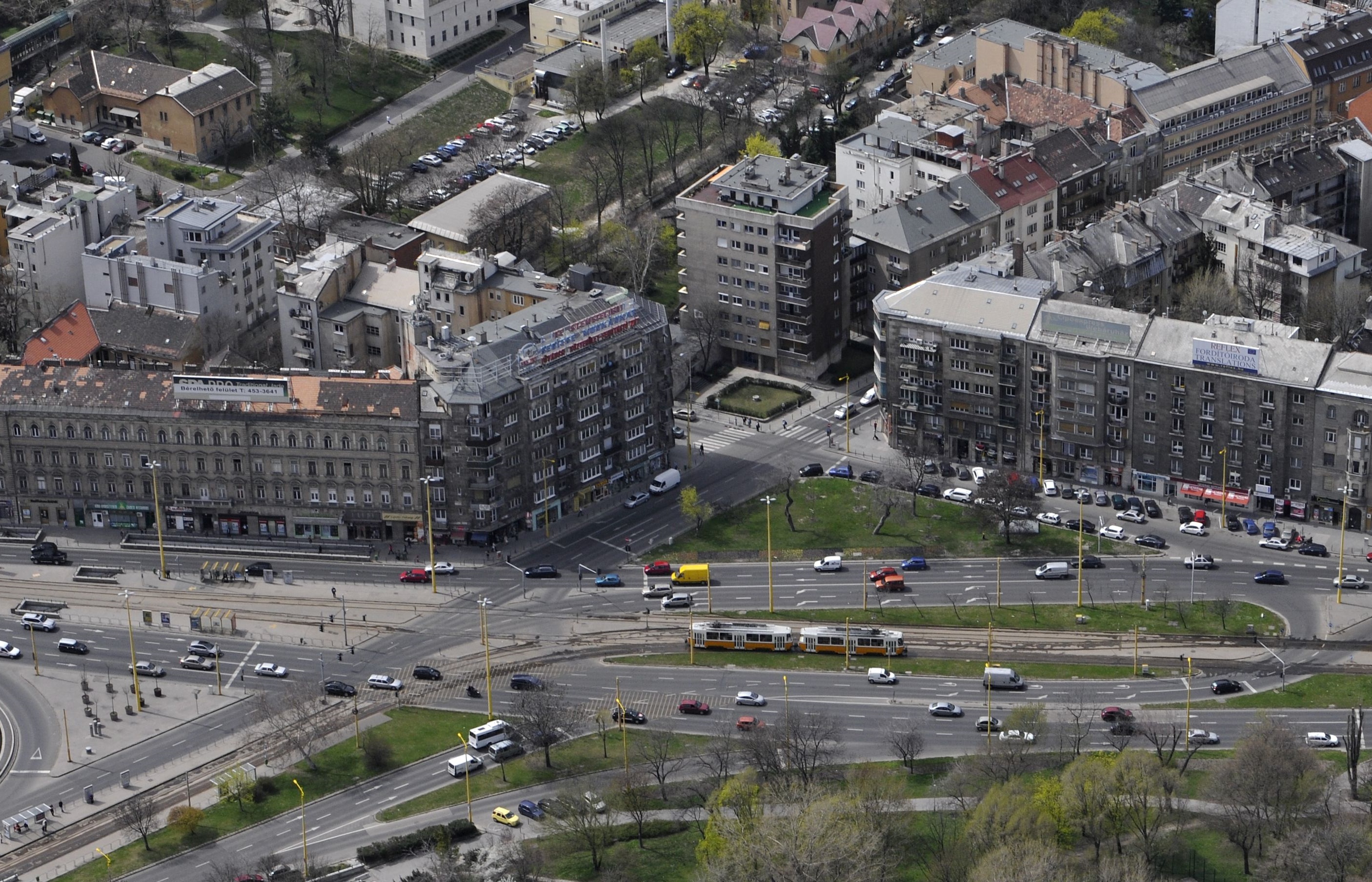
The Magyar Jakobinusok Square today with the corner building built after 1936 (Source: Ortofoto/minerva.bp12ker.hu)
Opposite today's Déli (Southern) Railway Station, between Alkotás and Kékgolyó Streets, once stood the House of Creation, the origin of which is connected to the Falk Family. The Falk Family rented the former area of the building in question as early as 1772, and then the property was purchased on 24 March 1775. According to the Property Tax Census book, the building was still under construction from 1775 until 1777, so it was probably then that the later House of Creation could have been built. The house was still only ground floored at that time, later, in 1790, it was further expanded, and a huge, beautiful garden was created on the estate.
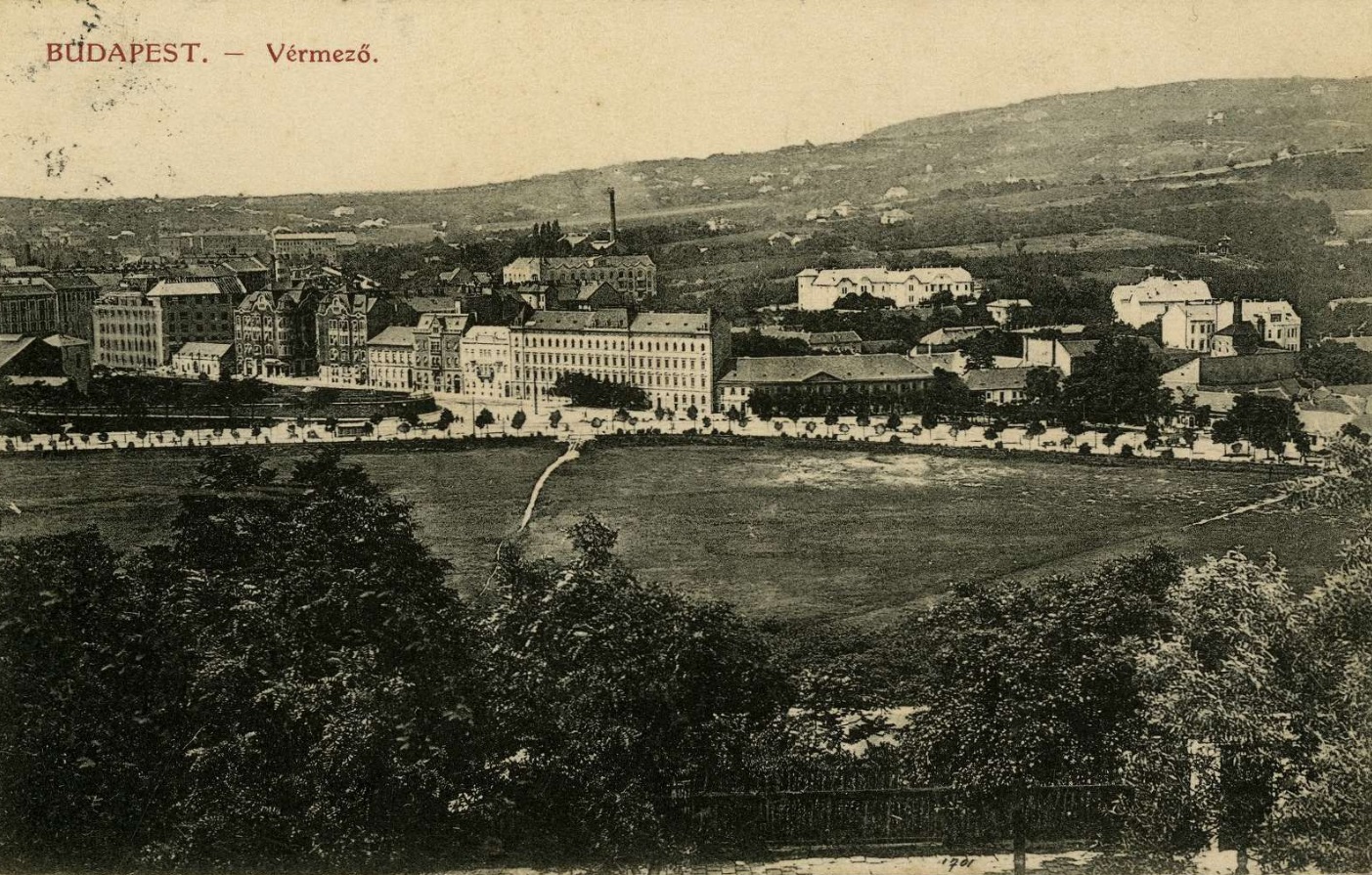 Vérmező, where the leaders of the Martinovics conspiracy were executed, with the House of Creation in the background, the 1910s (Source: FSZEK Budapest Collection)
Vérmező, where the leaders of the Martinovics conspiracy were executed, with the House of Creation in the background, the 1910s (Source: FSZEK Budapest Collection)
Ignác Martinovics and his associates, the leaders of the Jacobin movement, were executed in 1795 on the huge square in front of the house. Incidentally, there are several legends attached to the house. According to some recollections, Frederick William III of Prussia, Alexander I of Russia, and Francis I, Emperor of Austria, who were on their way to Pest-Buda from the Vienna Congress, rested here in October 1814. There is also talk of a case where Maria Theresa danced in the house, but the building was mentioned together with the Grassalkovich princes as well, but these are mostly just rumours. In any case, by 1814, the Falk Family died out, so their houses and property were auctioned off.

The House of Creation still shows a relief of Creation in the early 1930s (Source: Hegyvidék Local History Collection)
During the sale of Falk's properties, the house was bought by former city lieutenant Ádám Wurmhörger. The new owner applied for a permit to sell salt, which was supported by the Buda council because they saw that the new owner wanted to build a new floor on the former Falk House at great cost. Probably related to this 1816 floor-building is the formation of a relief that was located in the line of the gate of the house in the tympanum above the first floor. The relief was triangular and depicted the creation of the world. One of the most beautiful sculptural works of Buda at that time, the “Creation”, depicted the moment when God created the world.
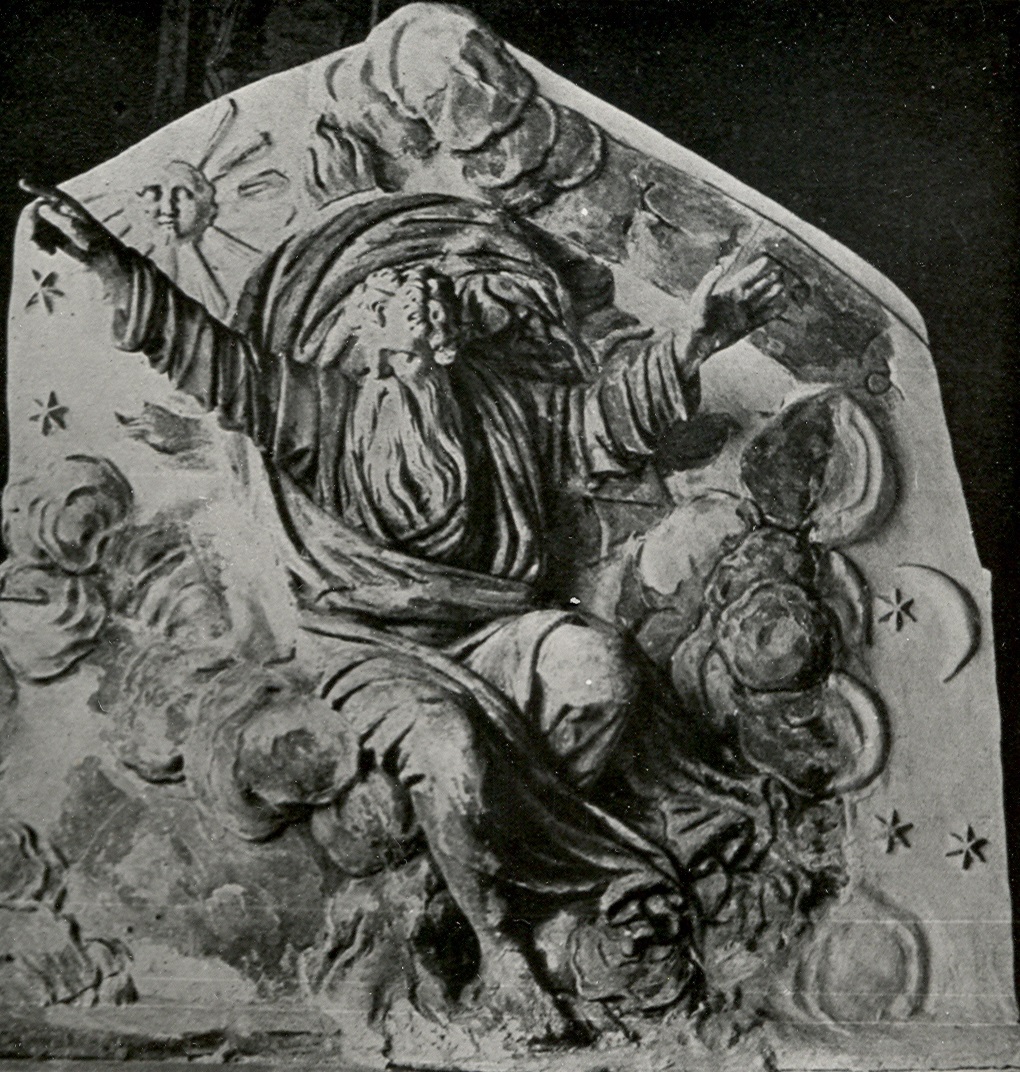
The relief of Creation by an unknown artist (Source: Hegyvidék Local History Collection)
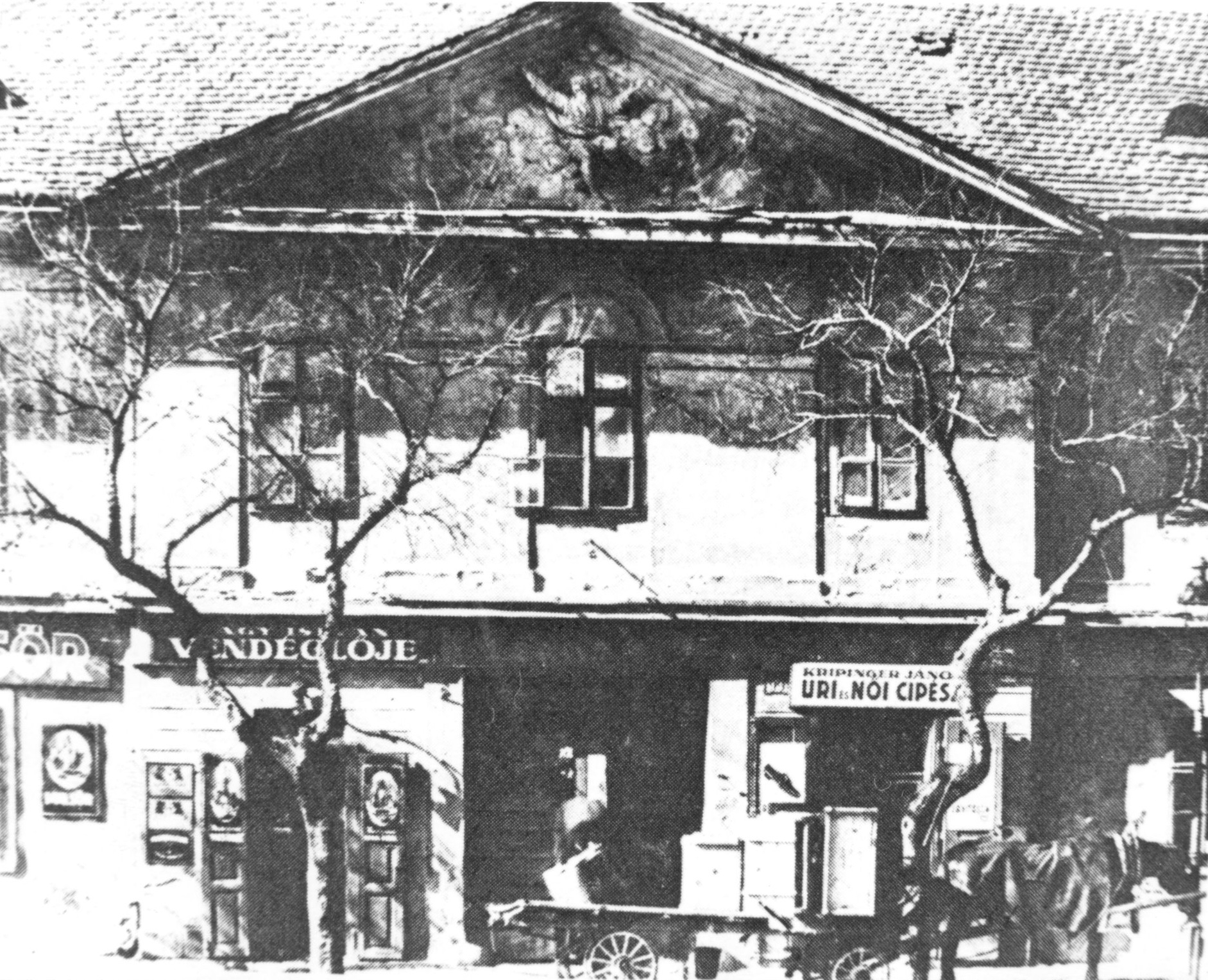 There were many shops and stores on the ground floor of the House of Creation, while the owner lived on the upper level (Source: Hegyvidék Local History Collection)
There were many shops and stores on the ground floor of the House of Creation, while the owner lived on the upper level (Source: Hegyvidék Local History Collection)
Due to the relief, the Empire-style building was called the “Schöpfungshaus”, or House of Creation, by the German-speaking citizens of Buda, which then spread to the adjacent street. The word "Schöpfung", i.e. Creation Street, was then translated in the meaning of formation at the time of the Hungarianisation of street names, without looking into what it meant, thus incorrectly the former House of Creation became House of Formation, and Teremtés (Creation) Street became Alkotás (Formation) Street. However, perhaps it is due to this accidental misinterpretation that the actual meaning of the name of the street has survived. Later, in the 1950s, Teremtés Street could almost certainly not have kept its name due to the high degree of anti-religionism. Thus, the name Alkotás Street has survived, if not originally, but indirectly.

Schöpfungs Gasse, or Teremtés Street, and Blaue Kugel Gasse, or Kékgolyó Street on an 1854 map (Source: Mapire.eu/Hungaricana)
However, it is also a mystery why this beautiful relief was made and why it depicts the creation. According to the most plausible idea, and the contemporary newspapers, the sculpture may have been inspired by composer Joseph Haydn's oratorio "The Creation" (Die Schöpfung in German), which Haydn himself conducted at a music history performance on 8 March 1800 at the Royal Palace in Buda.
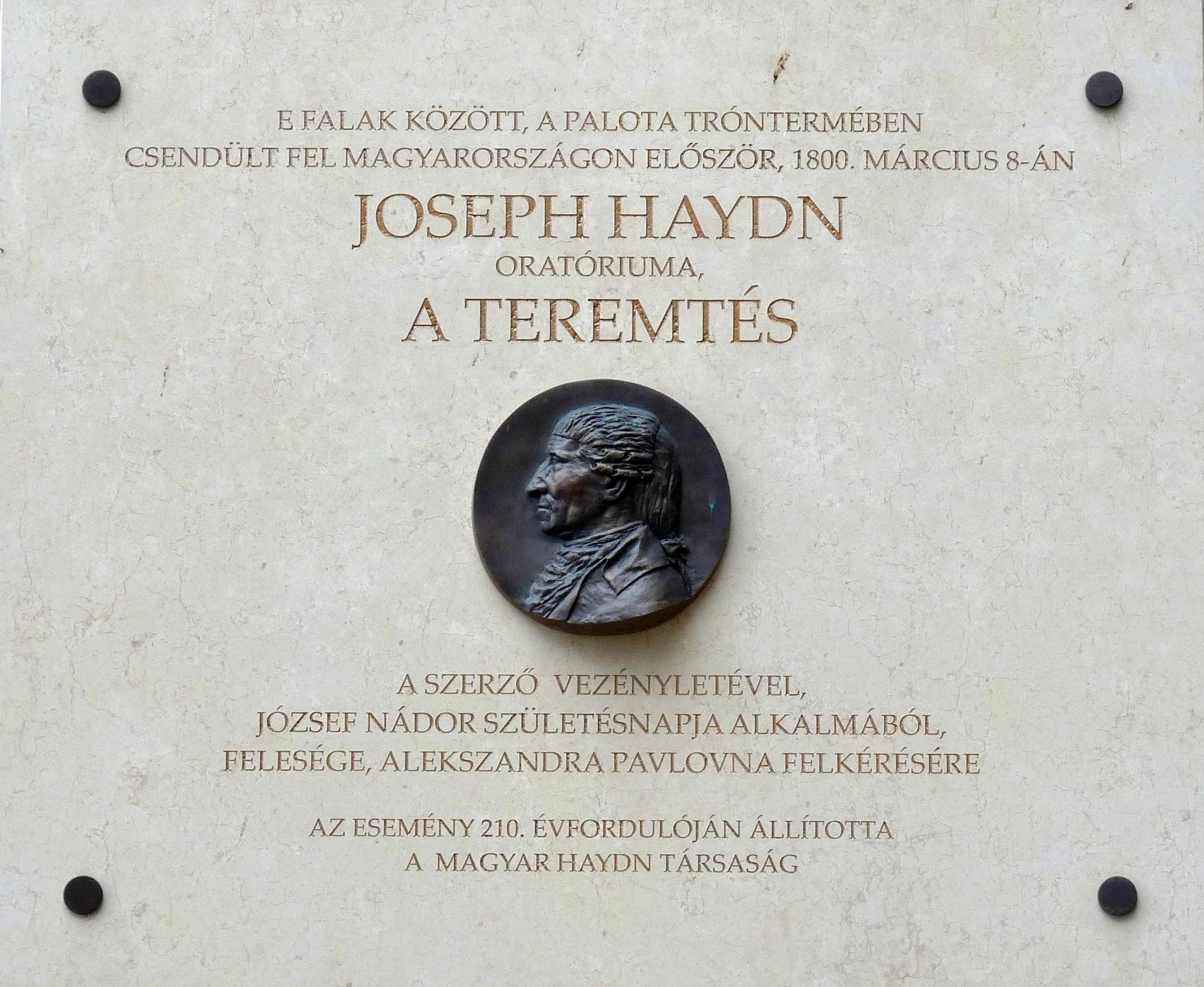 Memorial plaque of the performance on the wall of the Buda Castle (Source: Wikipedia)
Memorial plaque of the performance on the wall of the Buda Castle (Source: Wikipedia)
The Wiener Zeitung in Vienna, one of the oldest newspapers in the world, still in operation, reported on 19 March 1800 on the great performance:
“In Buda, the birthday of the Archduke Palatine was celebrated with all the signs of joy. The Archduchess, Her Imperial Highness, who invited Haydn, Doctor of Music, to Buda, pleasantly surprised His Royal Highness, and in the royal palace, she made the famous artist perform his unsurpassed oratorio, “The Creation”. The oratorio was performed to the satisfaction of Haydn by the musicians and the singers with masterful perfection. The art lovers were also a big part of the lucky success…”
Probably such an art lover could have been Ádám Wurmhörger, the customer of the relief, who was able to have the work made on the facade of the house in memory of this musical event that attracted considerable attention. Indeed, the work depicts the moment of creation as the Lord sits among the clouds, in his cloak that shoots tongues of flame, commandingly raising his huge hands between the stars and billowing clouds like a conductor conducting a symphony of creation, so it is conceivable that the Creation relief was born as an ornament and commemoration of this.
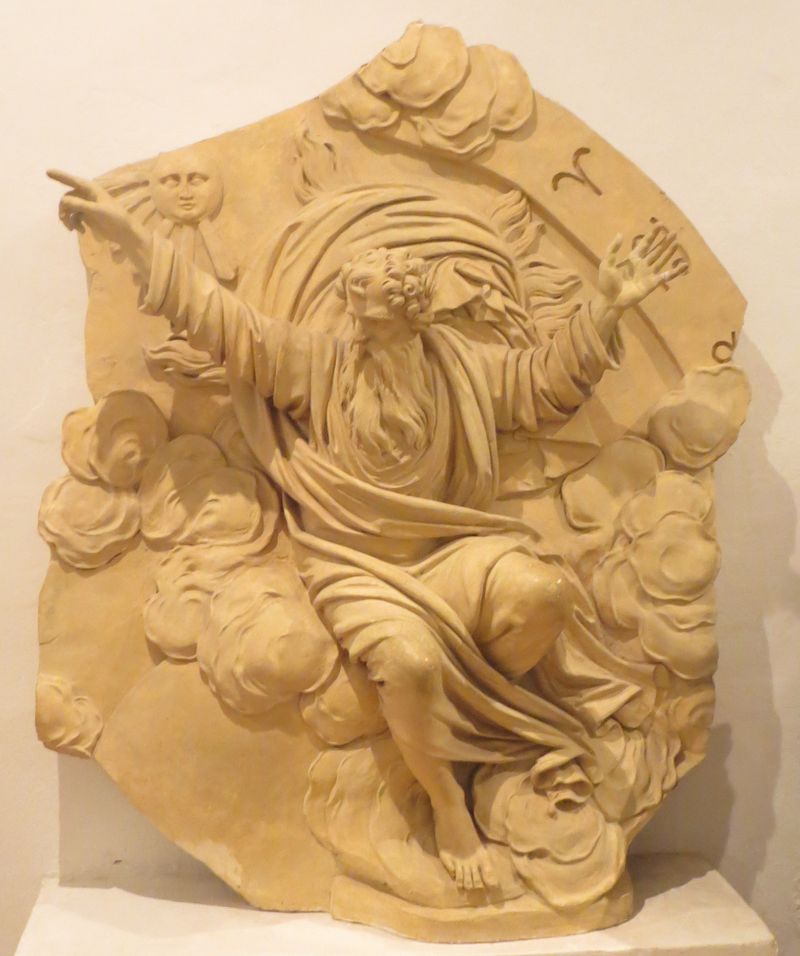
The relief entitled Creation can still be seen in the Kiscelli Museum today (Source: BTM - Kiscelli Museum)
This idea is reinforced by the fact that in 1798 Haydn's oratorio of The Creation was first translated as 'Alkotás' (Creation), and the nearby present-day Horváth Garden, bordered by Krisztina Boulevard, Attila Street and Alagút Street, was formerly called Haydn Park.
Ádám Wurmhörger later became indebted and lost everything, so the House of Creation fell into the hands of the new buyer, Captain János Heinrich. János Heinrich, who was probably one of Wurmhörger's creditors, did not receive the land sale agreement ('teleklevél') for the house until 1838 due to various lawsuits. It is important to mention that one of the first successful artesian wells in the capital, and also in Hungary, was drilled here, in the garden of the house dedicated to the “Creation” at 273 Alkotás Street. The building had a huge garden, where a carved baroque, two-armed staircase led up to it. In the booth between the two arms stood the beautifully crafted, female-headed top of the artesian well, from which water flowed into a marble basin.
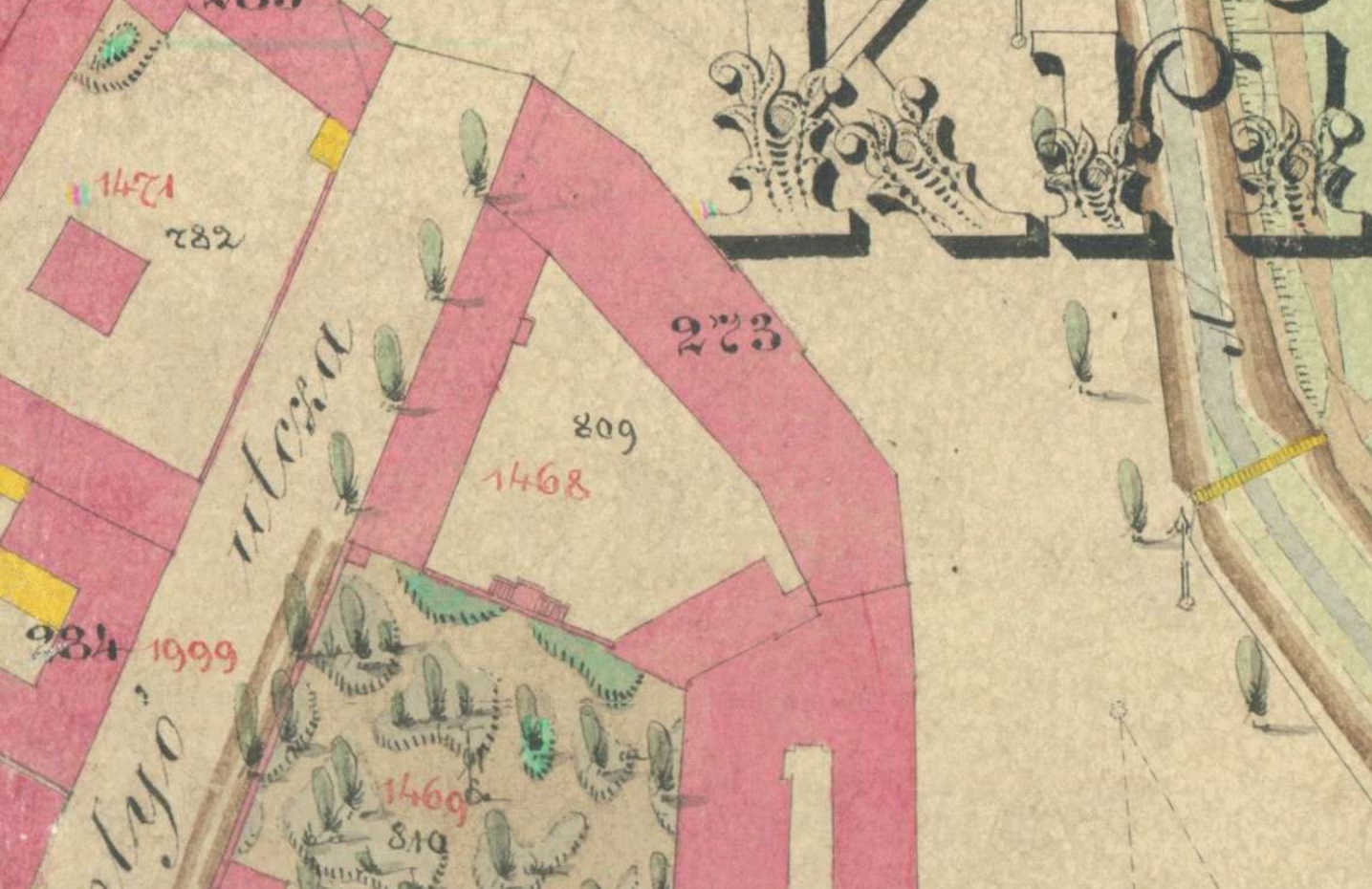
The House of Creation was located under No. 273 in the garden of which you can see the two-armed staircase built due to the artesian well (Source: Mapire.eu/Hungaricana)
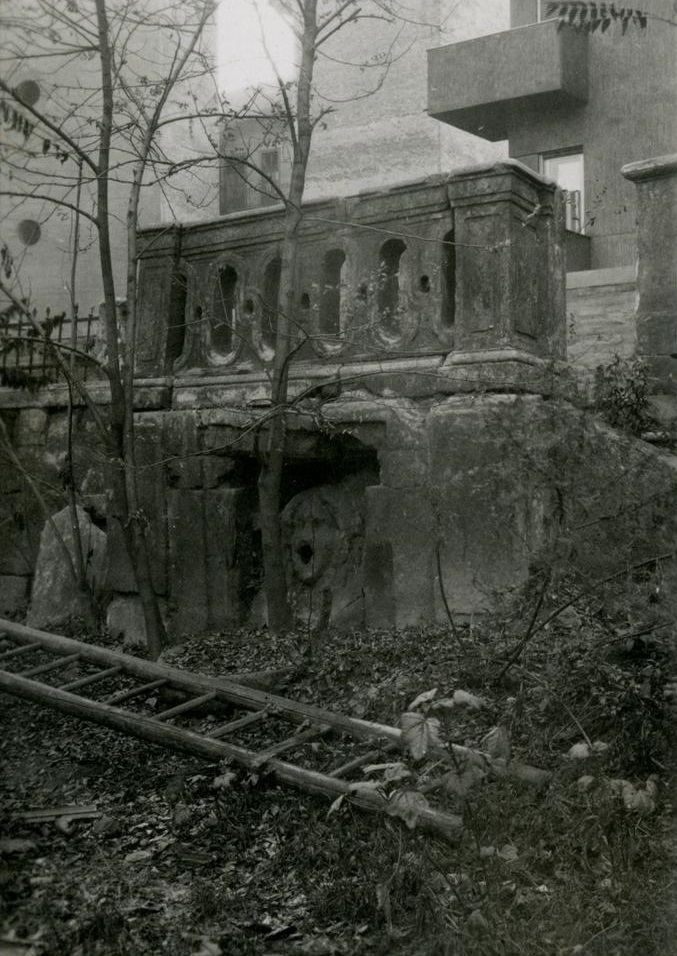
Ruins of a well in the yard of the former House of Creation in the 1930s (Source: FSZEK Budapest Collection)
The House of Creation then went through the hands of several owners. It was a monastery and then a prison. During the demolition of the house, eleven skeletons were found in the land of the cellars, so surely several gloomy events could have taken place within the walls of the old building. The one-storey house was demolished 85 years ago in 1936 due to its uneconomical nature in the area that had become a central location, and a six-storey house was built in its place.
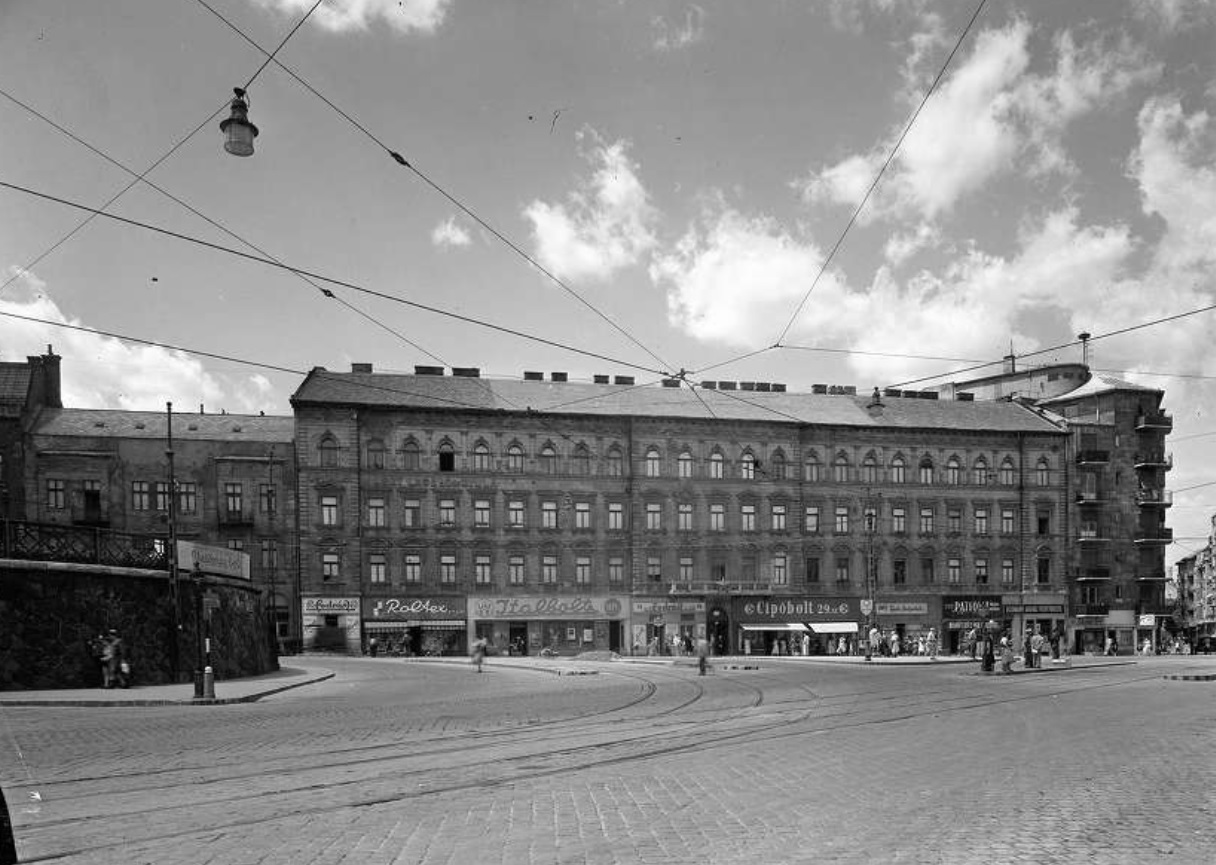
The crossing of Alkotás Street - Krisztina Boulevard in 1952, on the right side, the six-storey building can be seen, which was built on the site of the House of Creation (Photo: Fortepan/No.: 9110)
Many regretted the beautiful building, but most of all, the memory of its romantic past remained, as in fact, it was a dilapidated, plastered house with broken windows. Fortunately, the relief made by an unknown artist did not disappear without a trace, survived the demolition of the house, and can still be seen today in the Kiscelli Museum in Buda.
Cover photo: The former House of Creation in today's Magyar Jakobinusok Square in 1934, two years before its demolition (Photo: Fortepan/No.: 55454)

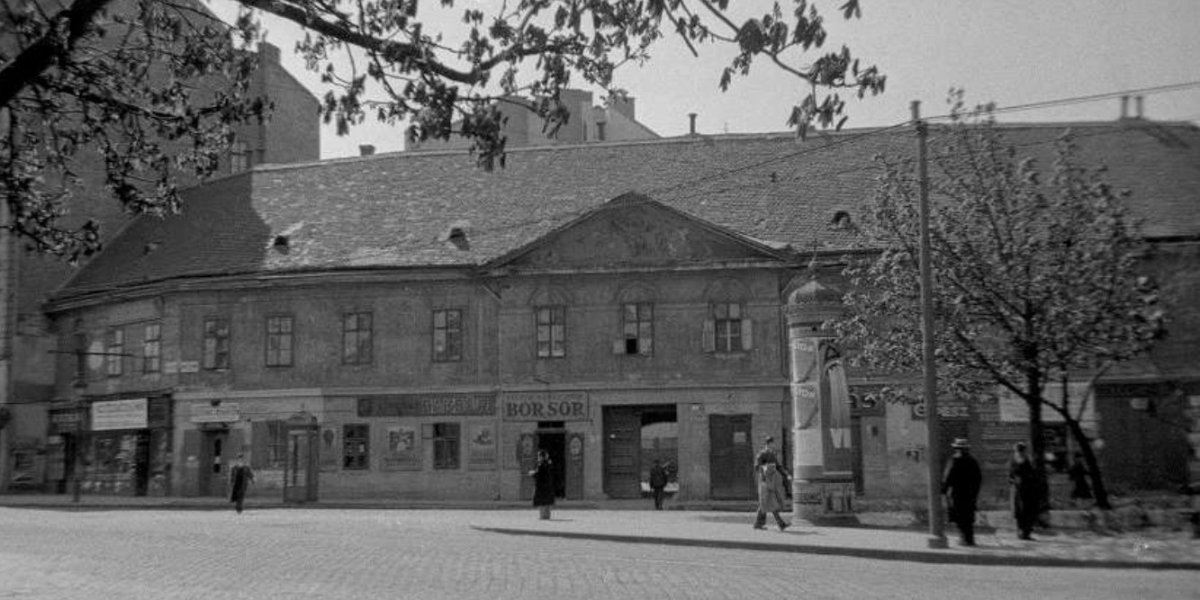


































Hozzászólások
Log in or register to comment!
Login Registration